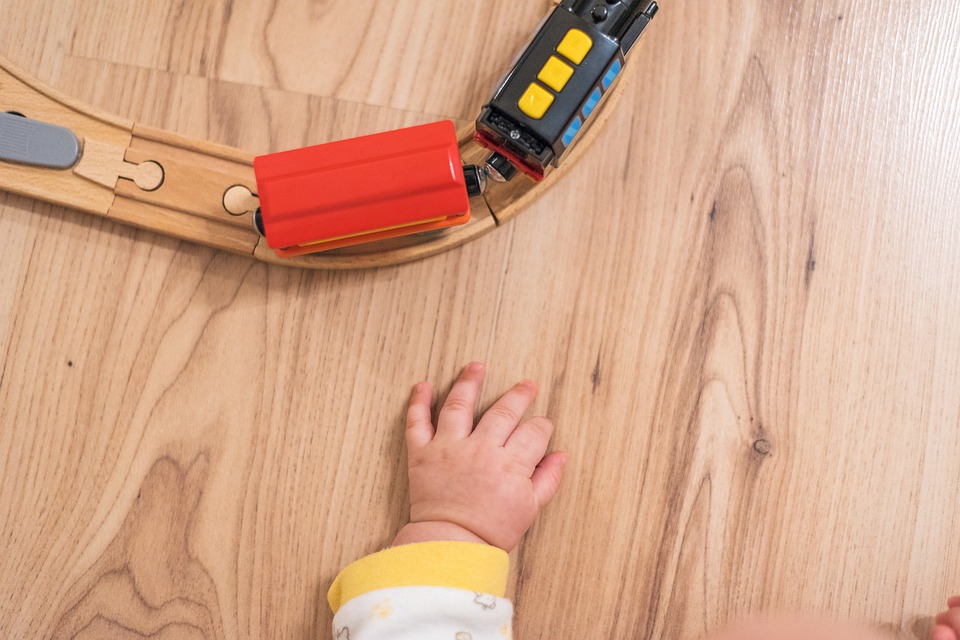Infrared heating technologies are becoming more and more popular in construction and renovation, increasing the thermal comfort in rooms, ensuring low energy consumption. They are based on the property of remote infrared radiation to heat solid bodies (floors, walls, ceilings) without heating the air, spreading soft uniform heat throughout the room. The editors of the site "bestx.htgetrid.com/en/" have prepared for you a rating of the best infrared heated floors for 2020. Underfloor heating improves the quality of life, there is no reason to neglect it, with it you will make your home more pleasant.
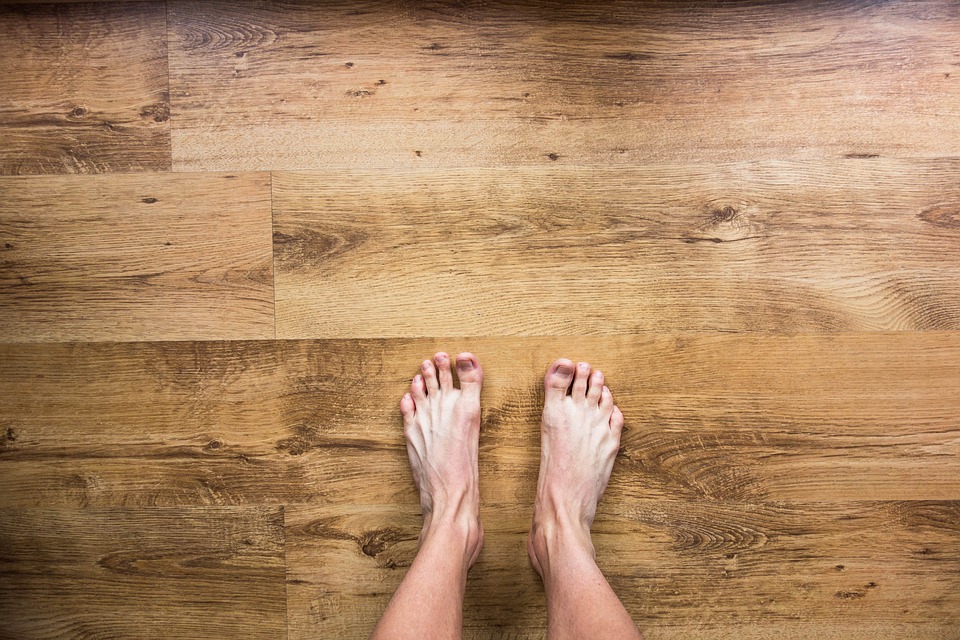
Content
Benefits of infrared underfloor heating
Compared to water or electric floor heating, experts note the following advantages of IR heating systems:
- Thin thickness and light weight;
- Installation in any premises (water are prohibited in apartment buildings);
- Installation under all types of floor coverings;
- Saving space and height (cables raise the floor by about 5 cm, water structures up to 20 cm);
- Shorter heating time, fast temperature regulation - in seconds;
- Homogeneous heat distribution, as the heating elements are placed close to each other;
- Flexible, robust and reliable design;
- Sectional work of the elements, if one group fails, the rest continue to heat;
- Simple installation, disassembly and reinstallation to another location;
- Lack of maintenance, tools and installation are cheaper, it's easy to figure out how to install it yourself;
- Possibility of complete replacement of central heating in warm countries;
- Durability. The best manufacturers guarantee a long service life, up to 50 years;
- Heating the floor surface, not the air, the room is easy to breathe;
- IR radiation does not form dust, condensation and mold, does not generate static electricity;
- Infrared waves, like the sun's rays, do not harm the body, but benefit health.
The last point is of interest to many. It is known that the sun in excessive doses is dangerous, causing heatstrokes with severe symptoms. This is how shortwave rays act on a person.
In an infrared heating system, the wavelength is long, uniform and constant. This effect on the body is milder, has a positive effect on the psycho-emotional state. Air ionization, absence of condensation and dust, improve the "climate" at home, make it more pleasant. It is more comfortable for people with breathing problems to breathe, but one must understand that the diseases will not disappear. It's just a warm floor, it is wrong to consider it a source of health.
The benefits of infrared radiation are not specific, such as curing acne, but more general: to provide a dry body and comfortable thermal energy.
Criterias of choice
The following technical data are important factors.
- Working voltage. The optimal values are 220-240 V.
- Power consumption. Shows how much electricity is needed. The minimum value is within 150 W per square meter, the maximum value is 230 W.
- Heating temperature for heating systems and floor surfaces above the system. Most electric floors are designed to heat the surface up to 30-35 degrees.The recommendations of the professionals boil down to the fact that this is enough to make the environment feel comfortable. In addition, if the numbers are higher, more power consumption, you will not be able to save.
- Heating speed. On average 15-20 minutes.
- Dimensions (length and width). On the market, the minimum strip width is 38 cm, the maximum is 1 meter. The length of the rolls reaches 150 meters. If it is necessary to process non-standard areas, to make bends, then you should ask what is the cutting step. There are pieces, measured in square meters, which are enough for a whole room without cutting.
- Material thickness. Modern copies are limited to a few millimeters.
- IR wavelength. Perhaps the most important indicator, since short waves are harmful to health. Optimum parameters are from 5 to 20 microns.
- Heating element. Carbon or graphite.
- Security features. What to look for: additional insulation, overheating protection, self-regulation, fire resistance, grounding.
- A set of accessories for installation. Customer experience shows that a complete package always makes the purchase and installation process easier.
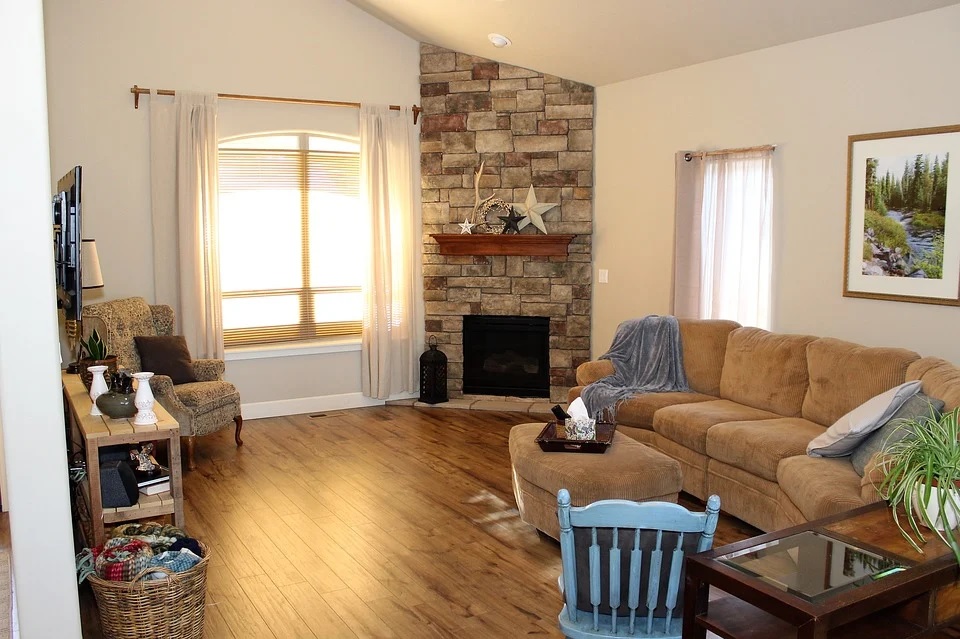
Types of infrared floors
Warm floors are divided into types: water and electric.
In the first, heating takes place through water pipes, the principle of operation is continuous circulation of hot water.
The latter are divided into subspecies: convection and infrared. In convection systems, the heating element is an electric cable. Unlike convection heating, which recirculates cold air to heat it, infrared heating acts directly on bodies through radiation. It takes a lot of energy to heat the air.
With infrared exposure, the amount of energy required to ensure comfort is reduced to 50-60%. Thus, a 500 W infrared emitter achieves the same characteristics as a 1000 W convective emitter over the same period of time. Based on these differences, infrared floors should be singled out in a special group, the most progressive and modern, but so far they are classified as electric.
Types of infrared floors - thermal films or core floors, carbon and graphite. These new items were included in the rating. Reviews on the Internet show that films are more practical, easier to handle.
The best infrared underfloor heating for 2020
Rod
KIP -82-130-1 (0.82 sq.m.) carbon
The product is energy efficient and creates comfortable warmth in heated rooms. It is easy to install by yourself. Recommended for tiles, self-leveling floors. A screed is required. The rods are interconnected by rubber mounts, which makes operation safe. The self-regulation function is also aimed at safety - when the desired temperature is reached, consumption is reduced, the floor saves energy. Heated area 0.82 sq.m. For such characteristics, the average cost is set at 1,785 rubles. The manufacturer, convenient for the buyer, varies the assortment in terms of heating area. All technical data can be adapted to the existing home conditions.
Customer reviews are the best: the floor is incredibly functional, instantly reaches temperature, gives a fantastic feeling of warmth, as if behind glass that lets the sun through.
Advantages:
- Workmanship;
- Ease of installation;
- Soft uniform heat dissipation;
- With self-regulation function.
Disadvantages:
- Not detected.
Carbon mat
Consists of carbon rods connected in parallel. The design reduces mechanical damage to zero, so the system can be laid over the entire area, even under furniture. Installation in tile adhesive or screed. Working voltage: 220-240 V. Thickness: 0.8 cm. Track width: 83 cm. Roll length 20 m. You can buy any quantity, easily cut to the nearest centimeters. Power: 116-130 W per meter. Warm floor costs 2300 rubles.
Many buyers appreciated the high-quality manufacturing of the floor, the presence of everything necessary in the kit, a guarantee, a detailed description of the installation.
Advantages:
- Reliability;
- Innovative technologies;
- Flexibility, ability to maneuver;
- High level of heat transfer.
Disadvantages:
- Not detected.
Unimat BOOST-0300 398.4W
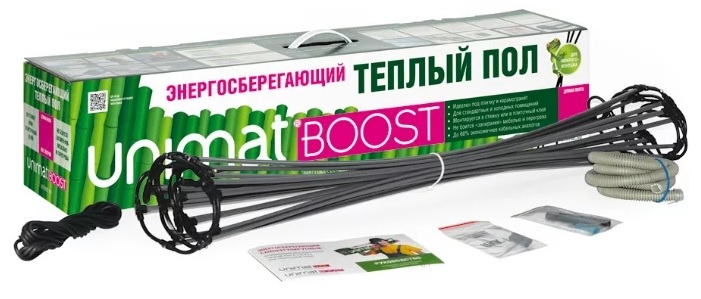
Infrared mat made of carbon, graphite and silver rods. It independently regulates the power: as soon as the floor temperature increases, consumption is reduced by half, saves energy, protects against overheating. Width: 83 cm. Length: 300 cm. Heated area 2.5 sq.m. Price from 6 to 9 thousand rubles. Installed in screed or glue. Ideal for tiles. The kit includes everything you need: connecting fasteners and wires, corrugated pipe, probe, plug ...
Advantages:
- High-tech rod material;
- Full self-regulation of power;
- Save on electricity bills.
Disadvantages:
- Not detected.
TeploCarbon 5 m² (HFIC-840W-S5 / 0.6)
A mat with carbon cords on a mesh heats 5 sq.m. Consumes 840 watts. Length: 8.4 m, width: 0.6 m. Thickness: 4 mm. The maximum temperature reached is 50 degrees. Product warranty 15 years. It costs 6200 rubles. Modern safe material, cords are externally insulated with PVC. Along the edges of the mesh there are adhesive tapes that stick to any surface, simplifying installation time and process. Recommended for any floor coverings (tiles, laminate, parquet, etc.). It is easy to work, the mesh can be cut as you like, gives freedom in the form of styling, lies flat. It is convenient to operate, the room heats up quickly and evenly, while saving energy. The manufacturer guarantees protection against harmful radiation.
Advantages:
- Safety, durability;
- Stable uniform heat dissipation;
- Saving electricity consumption;
- Ease of installation.
Disadvantages:
- Not detected.
Film
Caleo Silver 220-0.5 1 m2 220 W
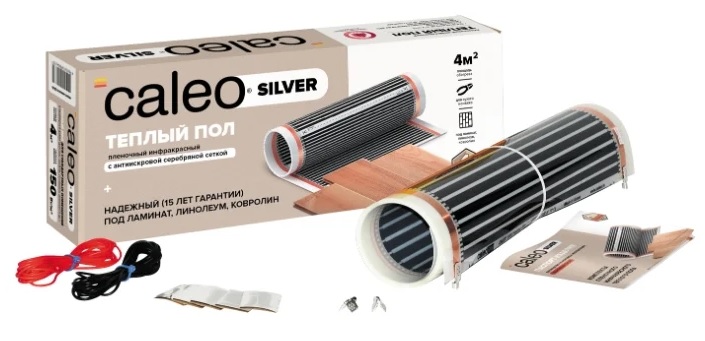
Caleo infrared films are technologically advanced, fireproof and designed to work under various coatings: for laminate, parquet, linoleum, etc. The film covers an area of one square meter, thickness 0.4 mm. Power 240 W. Anti-spark mesh prevents fire. Service life 50 years, 15 years warranty. The kit contains everything you need: clamps, connecting wires, bitumen insulation, step-by-step instructions. How much: from 1345 rubles.
Popular models from the same manufacturer: Caleo Grid and Caleo Platinum lines. They can be cut in small steps, and can be adapted to suit any angles and turns. According to buyers, this gives complete freedom of installation, along with a flexible film structure.
Advantages:
- For any type of flooring;
- With anti-spark silver mesh;
- Full set;
- Fast, easy installation.
Disadvantages:
- Not detected.
EASTEC Energy Save PTC 100 cm
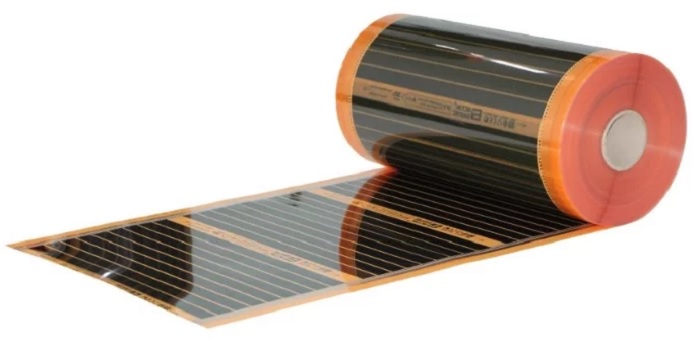
Inexpensive infrared films should not be underestimated. For example, the EASTEC Energy Save PTC meter costs only 790 rubles, but performs its functions 100 percent. It is an innovative self-regulating heating system. At low temperatures, it operates at maximum rated power, after which, when the temperature increases, the absorption of electrical energy in watts decreases. This reduces consumption by about 30% compared to standard heating foil. In addition, self-modulation reduces the risks associated with overheating. The film is suitable for wood floors, laminate, linoleum, tiles. Specific power 220 W per sq.m. When buying, any length is cut, with an accuracy of centimeters.
Advantages:
- Reliability, durability;
- Innovative heater;
- High level of heat transfer;
- Full self-regulation of power.
Disadvantages:
- Not detected.
Q-TERM 0.5 m 220 W
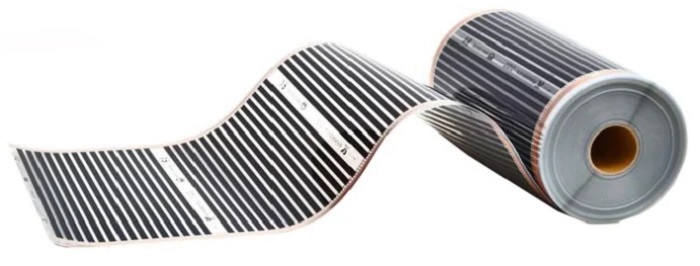
Heating film with a power consumption of 240 W, specific power - 220 W per sq.m. Practical width, 50 cm, roll length 140 m. Very thin - 0.33 mm. Designed for linoleum, laminate, as well as for wooden floors. Price 238 rubles.
According to buyers, it is an excellent budget solution for both apartments in multi-apartment complexes and for a wooden house. Quality tested over the years. This warm floor can replace heating completely, or be used as an additional heating option.
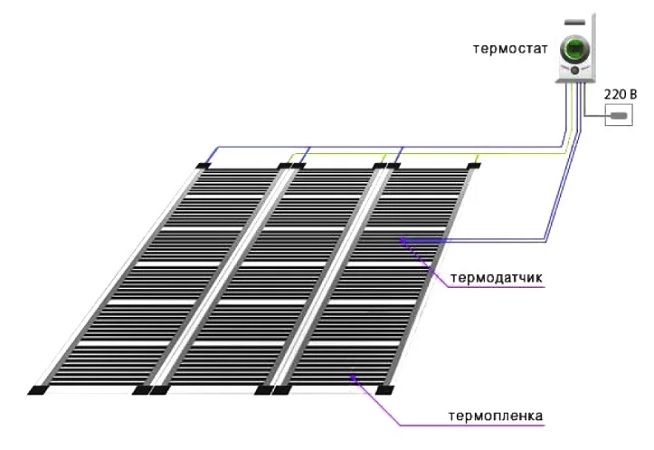
Advantages:
- High performance;
- Quality manufacturing;
- Affordability.
Disadvantages:
- Not detected.
Rexva Stem Expert KXMT305 75W
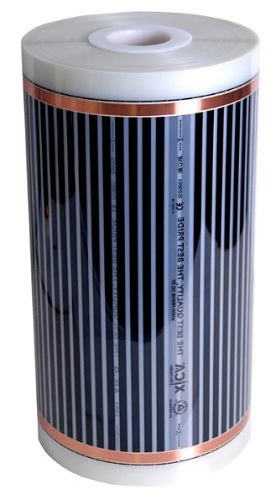
Infrared heating foil is compatible with all floors and building materials. The thickness is only 0.338 mm. Heating area 0.5 sq.m. Power consumption 110 W, specific 220 W. Width 50 cm. Average price 260 rubles. The floor heats up quickly. It does not reach too high temperatures, therefore an alternative application is possible: there are users using the film on walls, in campervans and yachts, in greenhouses, in places where pets are located, etc.
Advantages:
- Wide functionality;
- Soft, even warmth;
- Refractory properties.
Disadvantages:
- Not detected.
Electrolux ETS 220-6
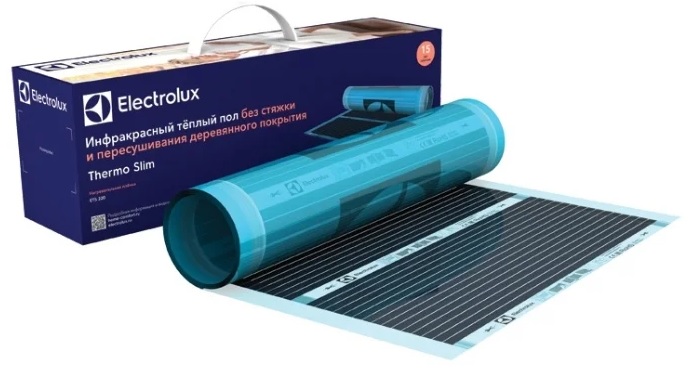
Slim version of underfloor heating. The entire surface of the heating foil heats up evenly and provides a pleasant warm floor over the entire installed surface. The energy used is converted into infrared rays practically without loss. Heating foil can be applied to existing floor without significant construction work. It can be placed in the living room, bedroom, beside the sofa or under the dining table. Power: consumed - 1443 W, specific - 220. Heated area - 6 sq. M. Size - 1200 x 50 cm. Cost - 6 thousand rubles.
Advantages:
- Quality of materials;
- Safety;
- Fast, easy installation.
Disadvantages:
- Not detected.
Varmel ECO Film 6.0-660W
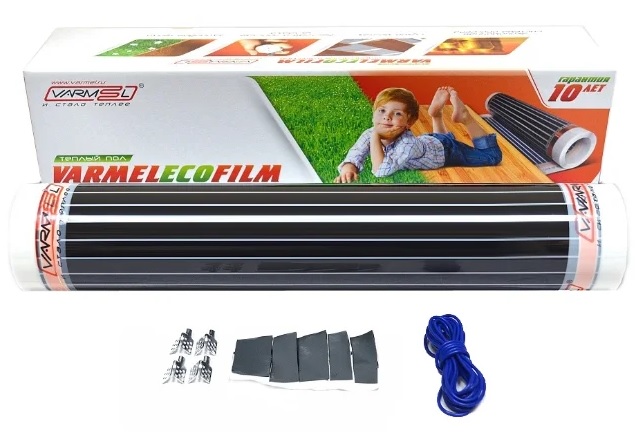
One of the most modern newest films. Suitable for all surfaces: floors, walls, ceilings. If placed on the floor, it is suitable for underfloor heating under laminate, linoleum, parquet and carpet. Optimal in different premises (for a wooden house, apartment, garage, warehouse, agricultural buildings ...). Lightweight, environmentally friendly. Thin - 0.4 mm. Heats an area of 3 sq.m. Consumes 660 W at a specific power of 220 W. Dimensions: 600 x 50 cm at a price: 2880 rubles. Recommended by the manufacturer as an additional heat source.
Advantages:
- Versatility, wide functionality;
- Latest generation products;
- Long cold cable - 4.5 meters;
- Easy installation.
Disadvantages:
- Not detected.
Conclusion
An infrared floor is a nice and useful option. In the cold season, barefoot is comfortable at home. It is relevant in many rooms: in the bathroom, kitchen or in the nursery, where most of the games take place on the floor. For many it is an innovation, so far few have appreciated the true value of infrared floor heating. Therefore, there is little information and a lot of discrepancies.
Under these conditions, the value of comments from those experienced in installing such floors increases. Share your opinion about which company is better, where to buy or order online, give practical advice on installation.

